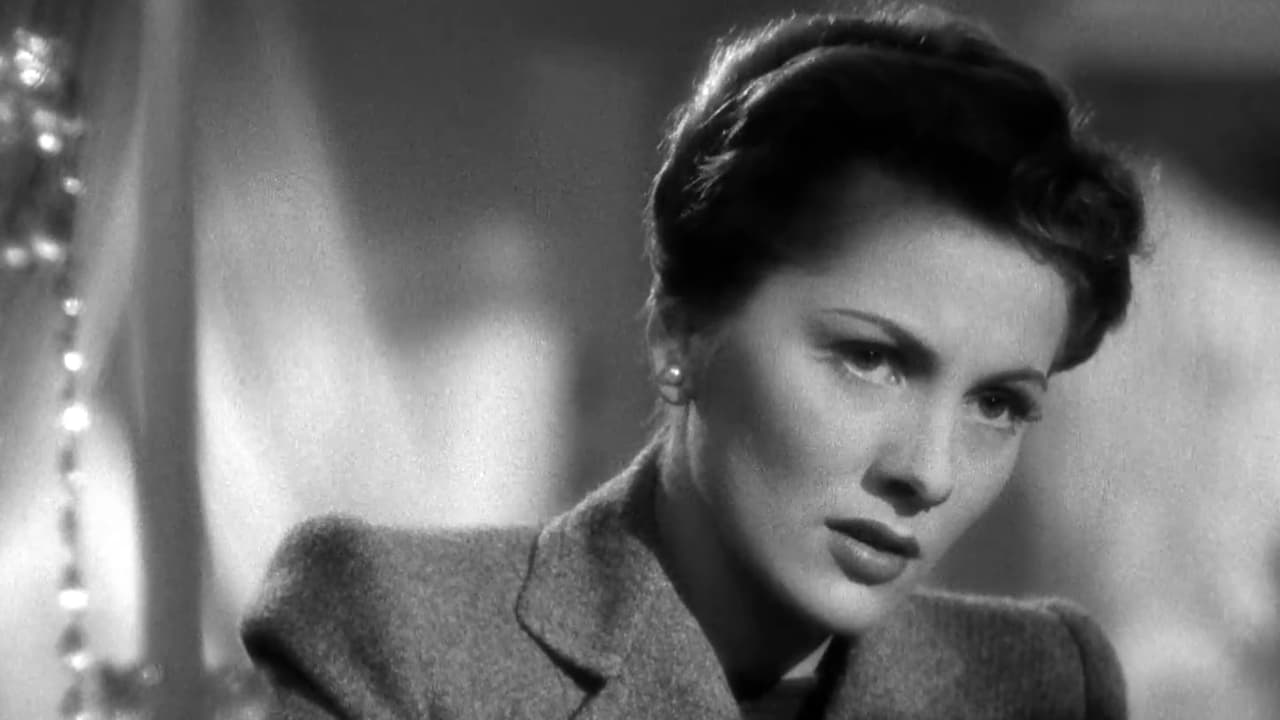

good back-story, and good acting
... View MoreBetter Late Then Never
... View MoreAn Exercise In Nonsense
... View MoreThis is a dark and sometimes deeply uncomfortable drama
... View MoreOne of Hitchcock's better films from the 1940s, "Suspicion" holds up well despite its disconnection from the modern world. Maybe that's part of its appeal. It's got all the Hitchcock hallmarks - suspense, humor, glamour, sophisticated repartee, fine craftsmanship. Cary Grant is endlessly charming whether he's a hero or villain; It doesn't matter. Joan Fontaine commands the screen in a quiet, subtle way. She is lovingly photographed throughout, looking, arguably, at the peak of her beauty. The ending is highly problematic. Some viewers are okay with it. I find it awkward and stagy. It upends everything that's gone before it, blithely dismissing all that previous tension with a wordy and bogus explanation. The plot builds to a murder which never occurs. Still, "Suspicion" engages on every repeated viewing.
... View MoreDismissed by critics as "minor" Hitchcock, SUSPICION nonetheless has plenty to recommend it.Set in a chocolate-box English village reconstructed on the RKO back-lot, full of green fields, mock-Tudor housing, hunting scenes and over-stuffed interiors, the film contrasts the stultifying respectability of spinster Lina's (Joan Fontaine's) life with the prospects offered by chancer Johnnie (Cary Grant).Lina lives in a village world where church-going and hunt balls are the highlights of daily life. Her parents (Dame May Witty and Sir Cedric Hardwicke) spend their days in their comfortable living-room, either embroidering or reading the paper. They have no need for excitement: General McLaidlaw (Hardwicke) has enjoyed a distinguished military career and has now retired. By contrast Johnnie, although reluctant to work, as well as being a habitual liar with a penchant for betting, has that indefinable quality called charm (what else would he be, when played by Grant?) Lina understands what a worthless person he is, but cannot detach herself from him. As Johnnie's friend Beaky (Nigel Bruce) tell her, he can be excused anything.The only suggestion that something might be amiss is communicated through lighting. The two protagonists are perpetually photographed with bars - window-bars, blinds, stairwells being three example - either across their bodies or at the back of the frame, suggesting imprisonment. This is both physical as well as emotional: neither Johnnie nor Lina can be honest with one another. As a result Lina continually suspects her husband's motives.There are continual echoes of REBECCA, filmed in the previous year - not only with the presence of Fontaine in the case, but also with the use of stock footage taken on the coast from the cliffs looking down at the sea crashing below. The final sequence, where Johnnie drives his sports car at breakneck speed, putting both his own and his spouse's safety at risk, recalls a similar moment in the earlier film. The endings of the two films are different, but the intertexts remain.There is one memorable sequence towards the film's end, drawing attention to Hitchcock's penchant for the macabre. As Johnnie is abound to climb the stairs, he is photographed in shadow, picked out against a tight column of bright light. Just what his motives are, we know not; but the visual effect is stunning.
... View MoreOne of Hitchcock's best movies in my opinion. It predates and foreshadows a number of later movies, such as Gaslight, The Two Mrs Carrols, In a Lonely Place etc. The balance between comedy, drama and thriller is great, and a bit unusual for its time too. It's possible that with another lead than Cary Grant, Hitchcock would have pursued a more horror-oriented course: Grant played rather a screwball character here, also in comparison to his roles in Notorious and North by Northwest.The two most memorable sequences concern a glass of milk and a policeman's starring at a (bad) Picasso replica. The latter has been discussed here on IMDb, and is in my belief merely one of the director's many whims. Besides, he did fancy Spanish painters cf Dalì's participation in the making of Spellbound. I do not find it likely that Hitchcock by this scene wanted to comment on the state of the female protagonist's mind, or to make a reference to the glass of milk scene. Why in heaven would he had thought that to be necessary?!(Being the most influential director of all times, Hitchcock frequently has to be over-analyzed. For instance, the brief close-up of a record label in Psycho, showing that Norman Bates was listening to the Beethoven Symphony called 'Eroica', has been interpreted as a sexual reference - 'Erotica' - to go with Bates's weird persona. On the other hand, the word 'sexual' actually occurs overtly in the movie: the psychiatrist says it when explaining that Bates is not a transvestite. So, why would Hitchcock have to subtly use a Beethoven title to bring on the subject?)
... View MoreA rich wallflower (Joan Fontaine) falls in love with a charming playboy (Cary Grant). Despite his reputation, she marries him. Before long she becomes suspicious of his motives for marrying her and soon realizes her life may be in danger. Enjoyable Hitchcock thriller with notorious studio-imposed ending that is not in sync with the rest of the film. Even with a more fitting ending, however, I don't think this would be considered one of the great director's best. It's a good one, for sure. Grant, Fontaine, and the supporting players are all excellent. Hitch's direction is terrific, as well. But the story just isn't all that special and the whole thing is predictable, at least until the out-of-left-field ending that most fans don't even like.
... View More